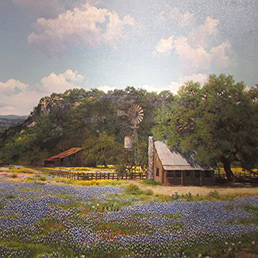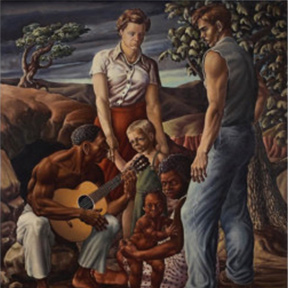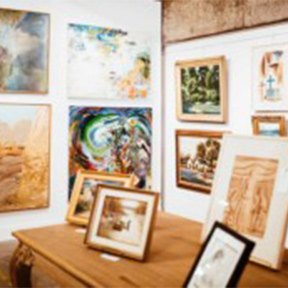- (214) 720-4044
- info@daviddike.com
- Mon - Fri: 10 am - 5 pm
Etnier, Stephen Morgan
Stephen Morgan Etnier
(Am. 1903-1984)
A native of York, Pennsylvania, Stephen Morgan Etnier was born on September 11, 1903 to a family of privilege, the first child of Carey and Susan Etnier. As was typical of this time, Etnier was expected to manage his family’s successful manufacturing business. However, instead of engineering, Etnier went off to create an identity for himself that was based on two precepts: his ambition to achieve excellence as a painter and his love of sailing.
His education at Yale University, Yale Art School, Haverford College, the Pennsylvania Academy of the Fine Arts, Boothbay Art School and his apprenticeships with Rockwell Kent and John Carroll was sporadic and incomplete, sometimes due to poor academic performance. However, in 1950, he was elected into the National Academy of Design* as an Associate and earned honorary doctorates of fine arts later in life from Bates College and Bowdoin College. In addition, in 1953, he was elected full Academician into the National Academy.
After his voluntary service as a commissioned officer in the U.S. Navy from Pearl Harbor until the end of the war, the lightheartedness of the prewar period never fully returned to Stephen Etnier’s paintings. His work of the early 1950s is characterized by quiet marine settings, sparsely lit early morning expanses, and harsh winter scenes. A solemn mood emerges as his art becomes more mature and becomes focused on atmosphere and isolation. These paintings lack the vivid color of later works and frequently are devoid of human figures, a reflection of his post war psychological state.
It was during this post-war period that Etnier, like Ernest Hemmingway, began to travel extensively. (He also earned his pilot’s license and owned a Cessna.) And as a consequence of this traveling, the size of his paintings became smaller though he was adept at both small and large works of art. Although long lived and prolific, Etnier, like Edward Redfield, destroyed many paintings that did not satisfy his ambitious goals. He considered himself to be a romantic realist (1).
Stephen Etnier came to first Maine as a devoted sailor, and then became a summer resident on Gilbert Head, Long Island, Maine. He and his second wife, Elizabeth Morgan Jay Etnier, of Westbury Long Island, New York purchased the estate in 1934 and restored the historic structure. The residence was located at the mouth of the Kennebec River off Popham Beach, Phippsburg, Maine. This marriage to Elizabeth lasted until 1948 and was followed by his marriage to Jane Pearce in that same year. Tragically, Jane, a manic depressive, committed suicide in 1949 while they were living in San Francisco.
The last thirty-five years of his life were as an established citizen at his residence named The Cove in South Harpswell, Maine. In all, he was married five times, the longest and happiest was his thirty-three-year marriage to Samuella Rose whom he divorced in 1983 to marry Marcia Hall. They divorced after a few months.
During the period from the 1960s until his death in 1984, his works are often reminiscent of Edward Hopper in terms of subject and scale. However, Etnier’s paintings are somewhat severe and lack familiarity; the subjects are in active tension with landmarks and have a surreal flavor. It was also during this period of his life, he sought to document the harbors, towns and beaches of his beloved Maine. On November 7, 1984, Mr. Etnier passed away at his home in South Harpsville with his sons John and David at his side.
His exhibitions and medals are numerous and include the following to name a few: National Academy of Design, the Butler Institute of American Art, Santa Barbara Museum of Art, Bowdoin College Museum of Art, William A. Farnsworth Library and Art Museum in Rockland, Maine, Bristol Art Museum at Linden Place, Bristol, Rhode Island and the Treat Gallery, Bates College, Lewiston, Maine.
Magazine articles include Esquire’s Bad Boy Artist; Magazine of Art article “Stephen Etnier”; Art News article “Etnier: Remoter Realism”; American Artist article “Stephen Etnier: Painter of a Gay, Sunny World”; and the American Artist article “Stephen Etnier: A Long Voyage Home.” In addition, his painting The Passing Tow was featured in Life magazine.





